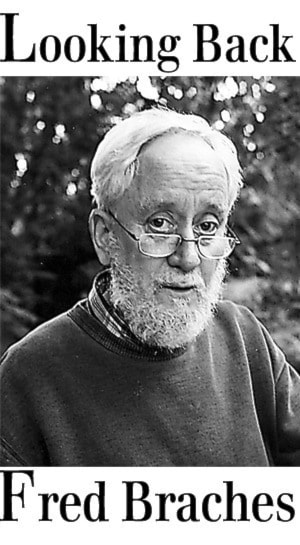In 1897, John Williamson, father-in-law of Whonnock shopkeeper L.C. York, kept a diary in which he reflects on what was going on in and around Whonnock that year.
The general store owned by York was the hub of the region. It was close to the railway station and had a wharf on the Fraser River, where paddle wheelers made regular calls.
The store also housed the regional post office and a telegraph office. Every settler, newcomer, or visitor stopped by, even if just to have a chat or get information.
Williamson’s diary is filled with notes about what he heard from that steady stream of pioneers visiting the store.
One of his personal interests was something that was a source of great excitement in the neighbourhood: prospecting for gold.
The discoveries in the booming Kootenays nurtured this agitation and encouraging mineral finds at Harrison Lake and the upper Kanaka Creek in 1896 turned everyone with time on their hands into a prospector.
All over the mountainous North Shore and the outcroppings of the Fraser Valley, people looked for precious metals. Not only the local people were attracted, but also many outsiders, mostly Americans from across the border. Although the Harrison Lake area caught most of the attention, dozens of ‘prospects’ were recorded as claims from the Whonnock, Ruskin and Stave Lake area, with fancy names such as Yellow Jacket, Morning Glory, Meadow Lark. Williamson’s own “Old Man” claim was at Harrison Lake.
As is evident from the diary, speculation was rampant, and there was obviously more interest in selling “prospects” than to develop the claims or “mines,” as Williamson liked to call them.
Most prospectors lacked capital or were hesitant to put their own money at risk for developing their claim as required by law. It became a game of bluff poker with potential buyers, and the winner could earn hundreds of dollars if he sold his claim.
Not surprisingly, only a few claims in the area were actually developed, but some “mines” have survived until modern times and are mentioned in Charles Miller’s book The Golden Mountains. They are still visited by treasure hunters today.
The diary shows that mostly expert workers from outside the community were hired by the buyers to work on the claims. Some came from as far as Bellingham.
Secrecy may have been a reason why no local labour was hired because even if development showed that the claim was worthless, it could still be resold if no one locally knew it.
As the year progressed and summer came along, most of the aspiring prospectors returned to mundane jobs to earn cash to put bread on the table, finding work in the woods or preparing for the fishing season.
The Fraser salmon run of 1897 was one of the largest on record, but the canneries could not handle the quantities offered, and their low prices, if they wanted to buy at all, turned potential prosperity into a great disappointment for the fishermen.
Then, one day that summer, as Williamson’s diary shows, word reached the settlers about the treasures of the Klondike. It let people forget about the Kootenays and their own local “mines” and the disastrous fishing season. As the year ended, dreams of instant prosperity revived the spirit of many of the younger men planning to go north to the Yukon and Alaska the following spring. And they did.
Fred Braches is a local historian who lives in Whonnock.
Learn more
Fred Braches will be talking about Slumach and the Lost Creek gold at the Maple Ridge Public Library on Saturday, July 16 at 1 p.m.
